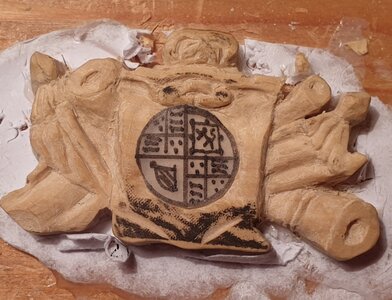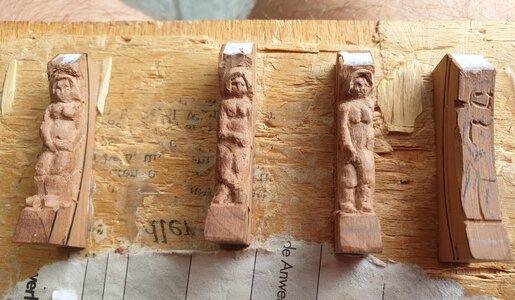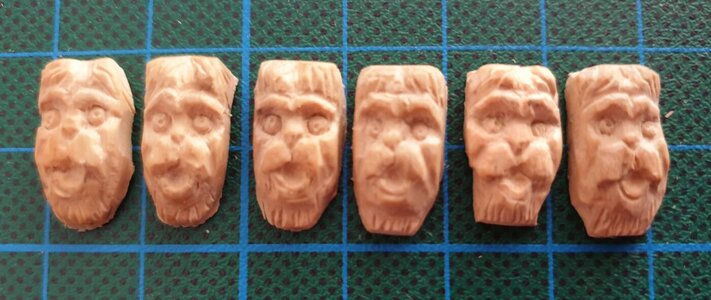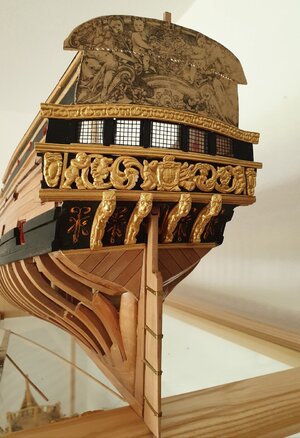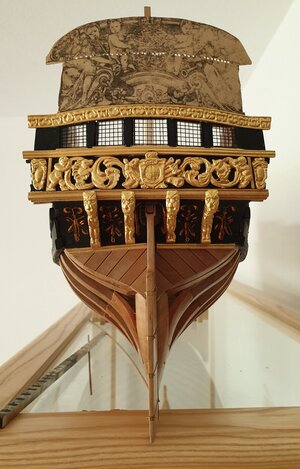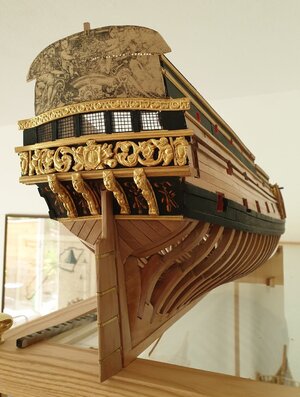Not all but most.and all these seconds with ship models .....
Thanks a lot for the kind congratulations
Cheers Alexander
 |
As a way to introduce our brass coins to the community, we will raffle off a free coin during the month of August. Follow link ABOVE for instructions for entering. |
 |
 |
The beloved Ships in Scale Magazine is back and charting a new course for 2026! Discover new skills, new techniques, and new inspirations in every issue. NOTE THAT OUR FIRST ISSUE WILL BE JAN/FEB 2026 |
 |
Not all but most.and all these seconds with ship models .....
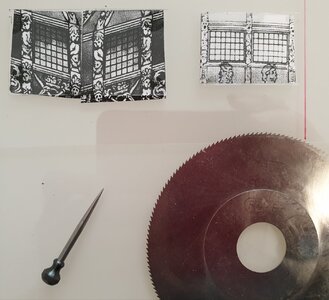
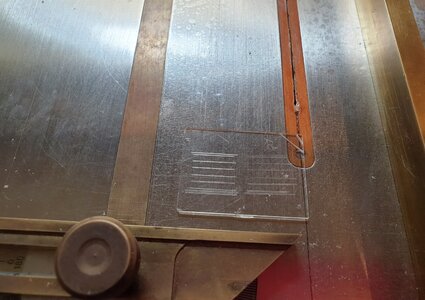
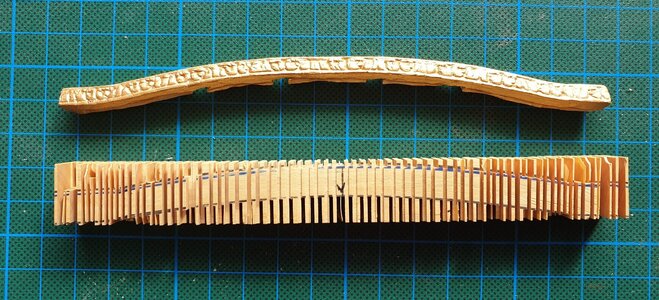
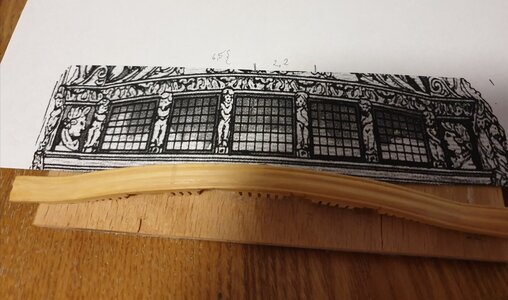
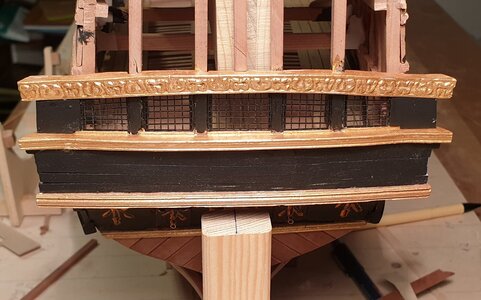

Thanks for the "etching" technique you used on the window's to create/simulate the panes. I have some microscope slide covers I had planned on attempting to cut but will also look into and order acrylic glass in case I can't master glass panes.The windows were sawn from 1 mm acrylic glass. The window bars were transferred from the plan with a scriber and then scored with a fine saw blade (0.6 mm). In order not to scratch the sensitive acrylic glasses, a transparent plastic film (airbrush film) was stuck onto the saw table. Sawing in these graded angles with pretty small contact surfaces was extremely tricky. Either it succeeds immediately or 4/5 repetitions are necessary. So the result is only 98 percent accurate.
View attachment 223328
View attachment 223329
The scratches were filled with diluted black oil paint and after several hours of drying time, the excess paint can be removed with a cloth. The color only remains in the scars and beautifully simulates the fine bars.
I had to make the upper counter twice. The first try was too narrow and the carving wasn't good either. But also my second attempt doesn't match the original either. The ancestors show me again and again who's Number One.
But this is an opportunity to show , how the various radii were sawen out. To make it absolutely symmetrical, I took a saw setting for both sides of the timber.
View attachment 223330
View attachment 223331
View attachment 223332
Greetings, Alexander
Hi Brad,Thanks for the "etching" technique you used on the window's to create/simulate the panes. I have some microscope slide covers I had planned on attempting to cut but will also look into and order acrylic glass in case I can't master glass panes.
Thanks for the tip Maarten!Hi Brad,
One tip when you use microscope glass, use a flexible glue, otherwise it will crack over time due to stress in the glass as a result of expansion and shrink of the wood due to temperature and climate.
Looking very good, especially when we realize how small these ornaments are compared to the Eurocent.Sluggish progress but at least a little bit forward.
Dogs and naked toddlers are the theme of St. Albans. Does that have an allegorical meaning?
View attachment 231975
wish a nice weekend
Cheers Alexander
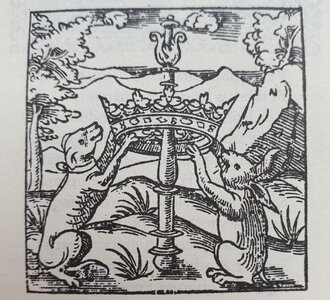
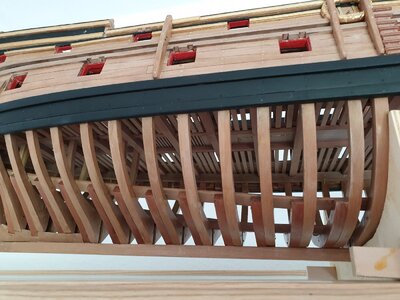
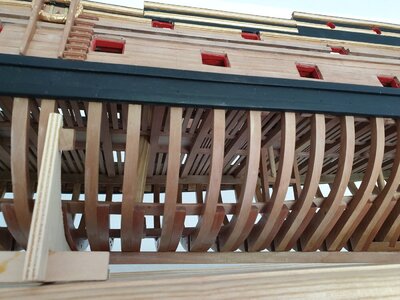
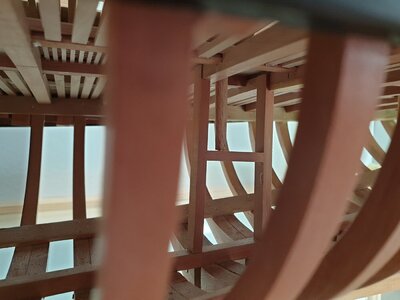
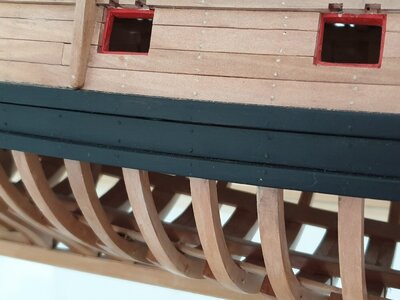

looks fantasticBefore I continue with the buildin report, I want to show you the inside of the model.
Because of the wide spacing between the frames, you can look inside. The bottom of the cannon deck can be seen above. The orlop deck is missing. Therefore, the bedding of the anchor capstan in the model with two posts rest on the false keel. The anchorbits sit on the false keel too.
The false keel rises sharply forwards and aft.
To visualice the rising line of the floor timbers, a ceiling plank is attached on both sides at the level of the upper edge of the floor timers. The deadwoods are visible in front and behind.
Front part of the hull:
View attachment 239374
Rear part of the hull:
View attachment 239375
Bedding of the capstan:
View attachment 239376
View attachment 239377
Greetings Alexander
